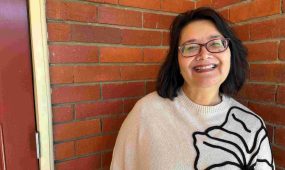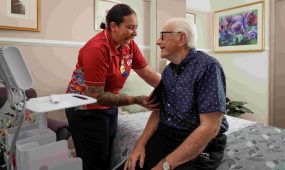Why did the chicken run across the Oxfordshire road?
Reflections
“Excellent thurifers spin the thurible in such a way that a thick cloud emerges during the Eucharistic Prayer. I try and get a good smoke happening. Although there is a fine line between smothering the incense hot coals and not putting enough incense in the thurible,” says formation student Tim Newton, who is currently studying theology at Oxford University
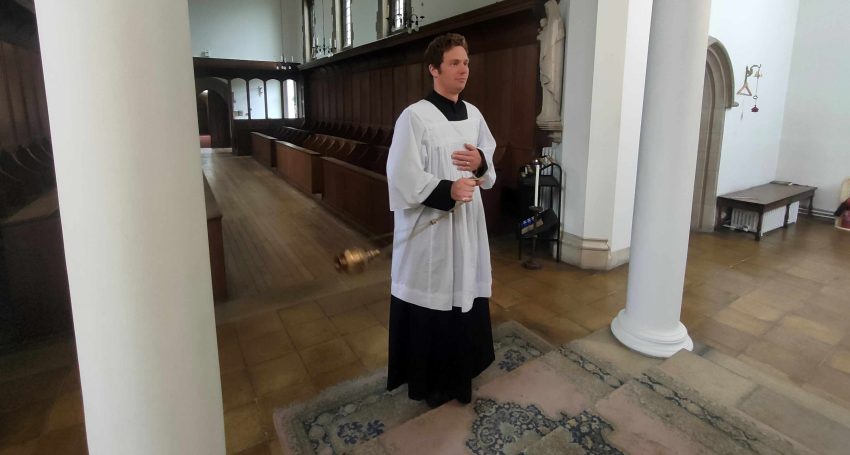
Since October last year I have been a part of the St Stephen’s House community at Oxford University. I live onsite with my wife Stephanie and our three-year-old daughter, Winnie. I am continuing my formation at Oxford while studying a Master of Theology, so I am engaged in both theological studies and the standard Church of England formation.
My studies are in part funded by an Ivor Church Trust Bursary, which is awarded by St Francis College.
The rhythms of my day are driven by the community where I live, worship and serve.
My days commence with Morning Prayer at 7.30am in the chapel. This is followed by Mass at 8am. We take turns serving during these gatherings — leading the Office or reading scripture during Mass. Observing the Great Silence, we are unable to engage in chit-chat until after Mass. The College handbook is followed religiously.
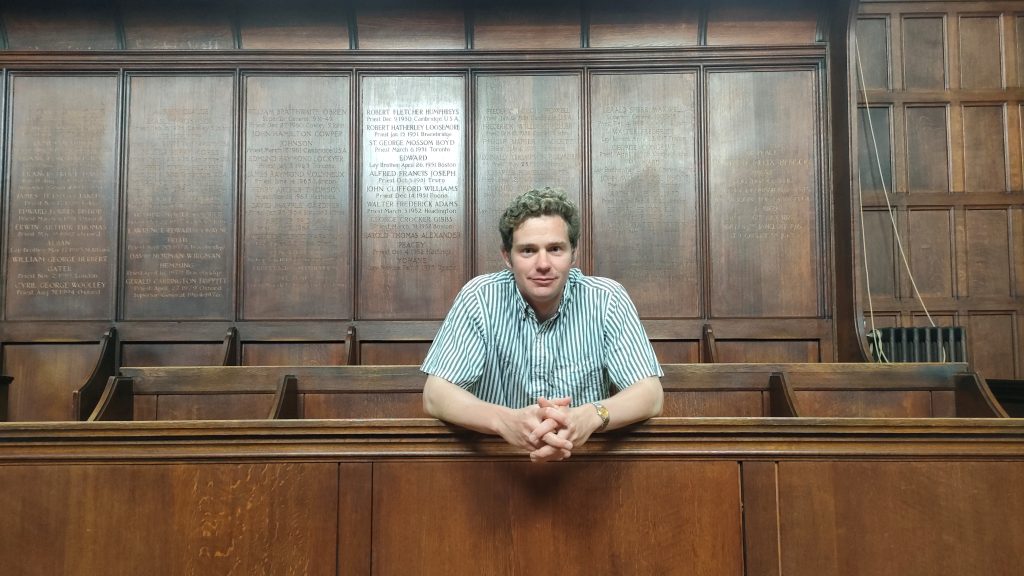
Formation student Tim Newton praying in his stall at the St Stephen’s House chapel at Oxford University in June 2023
After Mass the students gather for breakfast in the dining hall at 8.30am. A typical breakfast.
Classes start at 9am. There are lots of different formation classes and activities during the day in-house at the College. I also attend classes for my Master’s course, both at the College and in the wider Oxford University.
Lunch is held at 1pm in the dining hall. Following lunch students either gather for more classes or recreational activities, such as badminton, soccer, chess, darts or exploring the many quaint Oxfordshire pubs and coffee houses.
Advertisement
At 4pm we meet for afternoon tea. If you are rostered on to serve for Morning Prayer or Mass, you are rostered on to prepare the tea and coffee and put the biscuits out. This is taken seriously and if tea is not ready on time, those rostered on receive a curt email from the College Principal.
Free time follows afternoon tea so students can catch up on study.
At 6pm we gather for Evening Prayer, which is always sung. We take turns leading the singing for this.
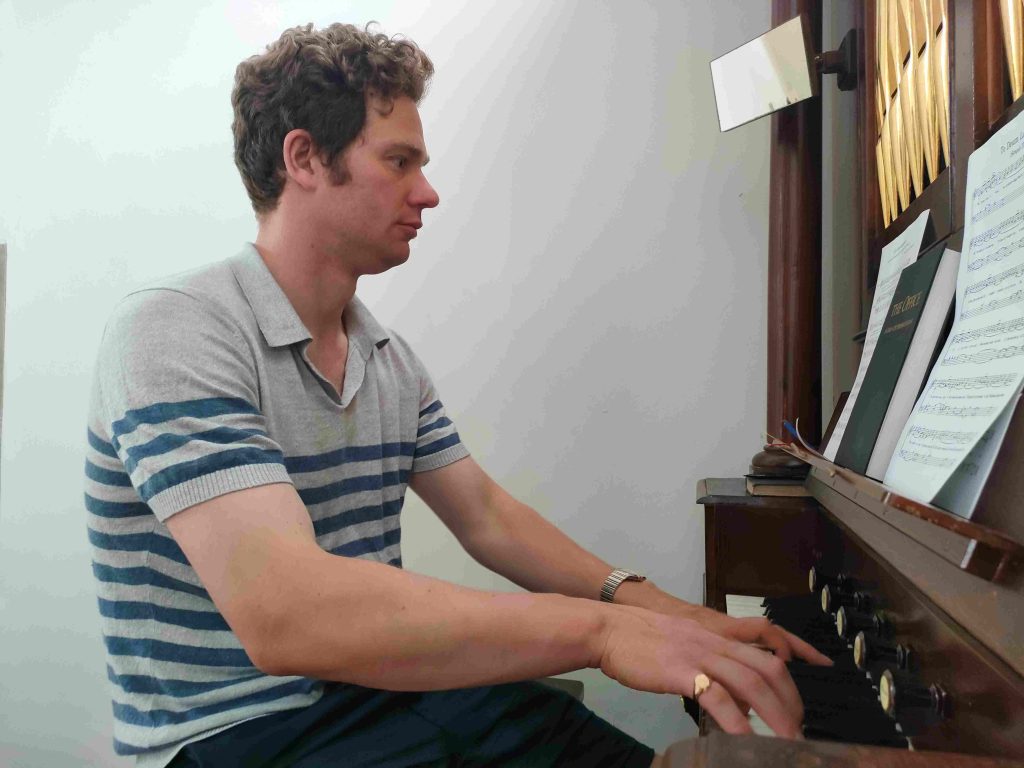
Formation student Tim Newton practising the organ in the St Stephen’s House chapel at Oxford University in June 2023
Dinner is always at 7pm in the common room. A typical meal is meat and three veg with a heavy dessert, such as chocolate or rice pudding. I usually opt out of “pudding” because we don’t play enough badminton to offset the kilojoules that would be consumed.
On Thursdays there is always a formal dinner with a special three-course meal followed by tea and coffee in the common room. A typical meal is a prawn cocktail for the entrée, venison or spatchcock with root vegetables for the main, and crème brûlée for “pudding”. The dining hall is set up like Hogwarts in the Harry Potter series. Most of the tables in the dining hall are long and low, with a high table at the far end of the hall where the Principal, Vice Principal, senior tutors and their special guests sit after processing in. The Principal says Grace in Latin rapidly from what looks like an old wooden chopping board.
Advertisement
It’s common to see well-known Brits at the formal dinner, including Biblical scholars and Members of Parliament. These famous Anglicans join students for an informal drink and chat after dinner.
Before dinner we drink the customary sweet or dry sherry. After dinner the cheapest bar in Oxford — our student bar — is opened for people to buy drinks. I was elected as treasurer of the student “common room”, so I have the important job of overseeing the bar’s prices. I need to ensure that the drinks are affordable and that enough money is raised for College activities. The bar closes at precisely 11pm. Because the community was monastic until the 1980s — run by the Society of St John the Evangelist — we have the Great Silence from 11pm until Mass finishes the next day.
I am also in charge of all the music we do until the end of the next academic year, which runs from October to June in the UK. This involves leading rehearsals, coaching singers and choosing the music in consultation with the Principal.
On Sundays we have a High Mass. I direct the small choir in the High Mass. We take it in turns to fulfill the roles of thurifer (which involves swinging an incense-filled metal ball on a chain called a thurible), torch bearer (which involves holding the candles and setting up the altar during the offertory) and MC (which involves standing beside the priest and holding the order of service or pew sheet so the priest does not need to touch the commonplace documents).
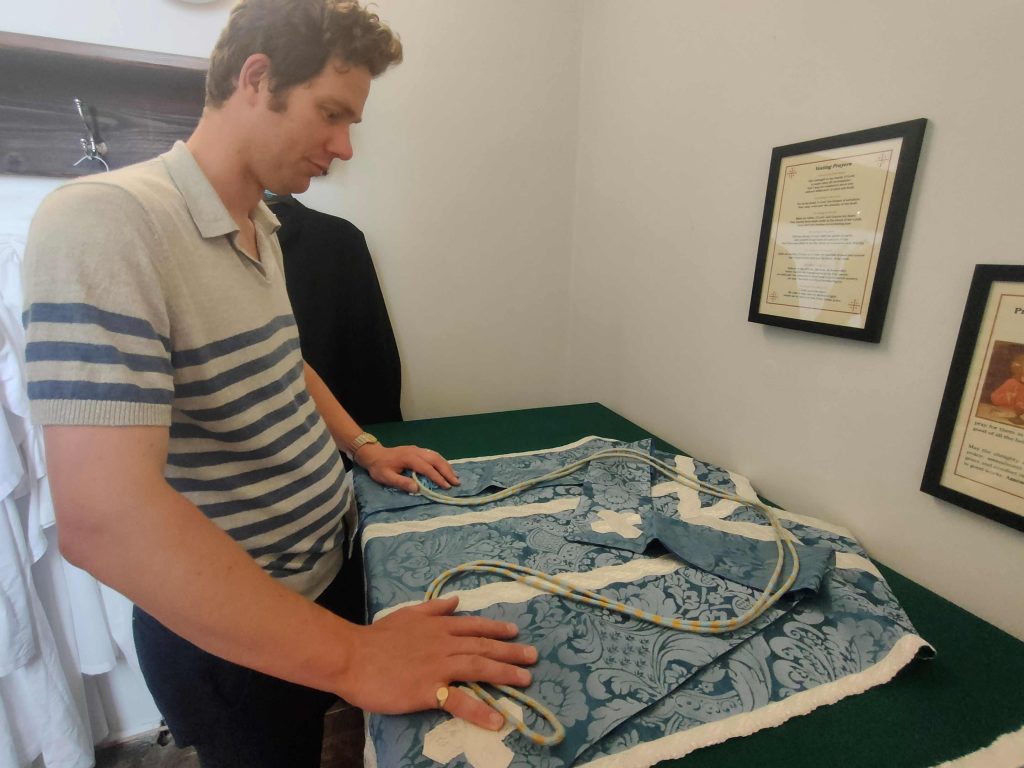
Formation student Tim Newton preparing for mass in the St Stephen’s House chapel sacristy at Oxford University in June 2023
Excellent thurifers spin the thurible in such a way that a thick cloud emerges during the Eucharistic Prayer. I try and get a good smoke happening. Although there is a fine line between smothering the incense hot coals and not putting enough incense in the thurible. An hour before the High Mass you get an hour to practise swinging the thurible, albeit sans incense. I aim to be the Shane Warne of thurible spinning.
I avoid making gaffes as much as possible. In serving roles, a culture of “fear” is inculcated so we mind our p’s and q’s. In Australia pronouncing Biblical names incorrectly in public is forgivable. At Oxford it’s quite embarrassing. While reading the Book of Common Prayer Office, I said “Oh Lord, save the Queen” (instead of “the King”) only once.
Stephanie works part-time, so I attended a Canon law conference with Winnie recently. The key note speaker was Professor Norma Doe, who is the Director of the Centre for Law and Religion at Cardiff University. Professor Doe is the leading Canon law authority in the Church of England. During his key note address, he genially engaged with Winnie, much to my delight even though Winnie was her typically reserved self. Let’s just say that she was a tough audience for Professor Doe.
A highlight of my formation sojourn was when all of the ordinands and staff went on retreat to Walsingham in Norfolk last term for a long weekend. We visited a shrine to Our Lady of Walsingham. The shrine was a popular pilgrimage site during medieval times. During the Reformation the nearby monastery and the shrine fell into ruin. The shrine was rebuilt in the 1920s with a replica of the Holy House of Nazareth that features a new statue of Mary. The retreat was prayerful and centring, helping to prepare us for the study ahead.
However, it’s not all pomp and ceremony, prayer and study.
During Orientation Week we did an activity called Où est le Poulet?, which means “Where is the chicken?” The classmate who draws the short straw must dress in a chicken suit and run from pub to pub messaging clues via the group chat so the class can find the chicken. We darted through the streets of Oxford all night trying to find the class’ chicken. In the end, our chicken was glad to be found having run out of both pubs and clues. Different colleges run the same activity simultaneously, so many a chicken is seen sprinting in the dark during Orientation Week.
I am very grateful for the opportunity to study at Oxford University as part of my formation and for being an Ivor Church Trust recipient. And, I look forward to updating anglican focus readers again soon.

